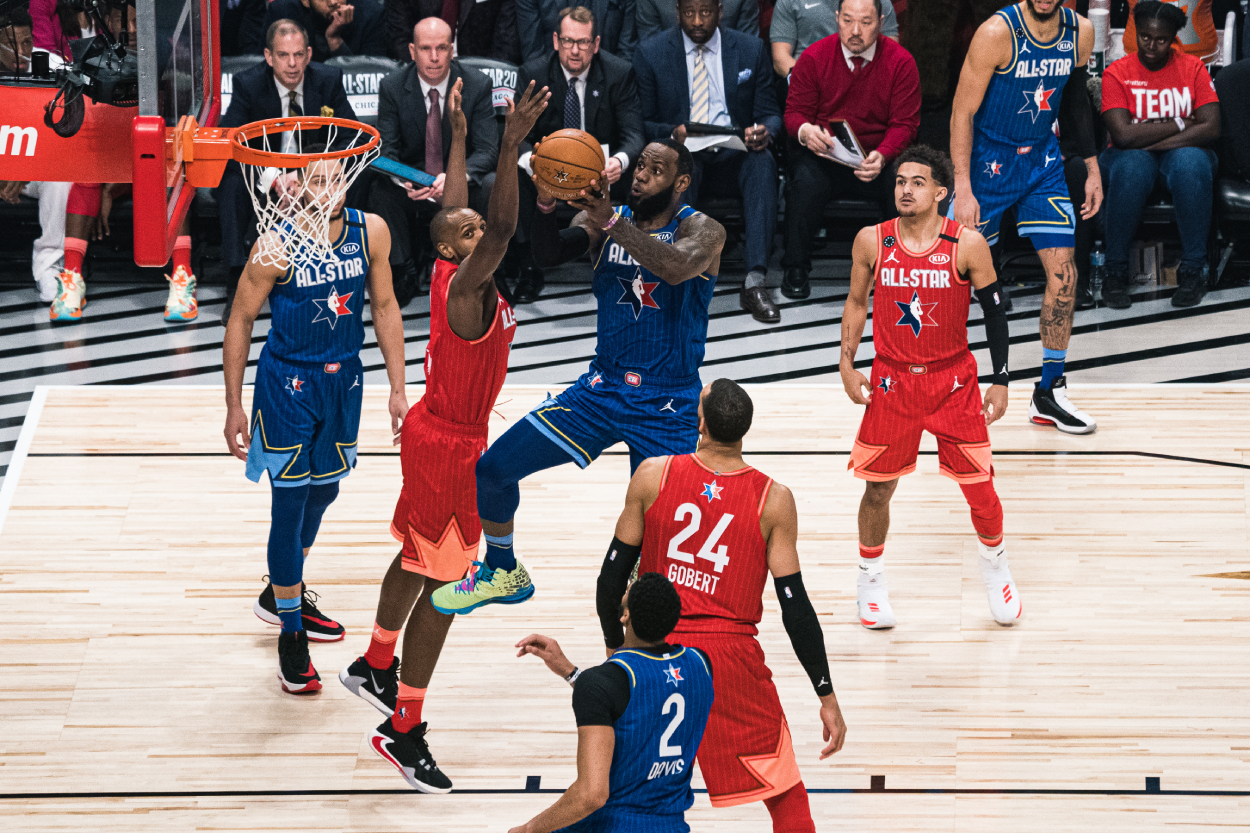NBA
NBA All-Star Game: What Is the Elam Ending and How Does It Work?

If you plan to watch the NBA All-Star Game this weekend, you may know that the fourth quarter will look a little different than a typical basketball game.
There is no clock.
In 2020, the NBA began using the Elam Ending in its All-Star Game, and it has stuck ever since. So, since the game doesn’t end once the clock strikes 00:00, how does the league determine a winner?
Here’s a look at the Elam Ending and how it works.
Nick Elam created the Elam Ending
Nick Elam, an assistant professor of educational leadership at Ball State University, started working on the Elam Ending in 2007.
He hatched the idea after he and some friends were watching March Madness during their senior year at the University of Dayton in 2004. They noticed how the quality of play dropped dramatically at the end of games.
“It was like so many games we had seen before, where it’s a highly intense, highly competitive game, and then you get to the final stretch of the game and all the air just goes out of the arena,” Elam said to Cleveland.com in 2020. “The quality of play deteriorates, and the outcome just seems predetermined.”
Once the end of the game nears, the leading teams typically slow their pace to try and run the clock out. The trailing teams, on the other hand, usually foul to extend the game and sometimes, in an attempt to make the score closer, take awful three-pointers.
It results in great contests turning ugly.
So, Elam created the Elam Ending.
How does the Elam Ending work?
The Elam Ending is quite simple. Once the game gets to a particular point, the clock turns off, and a target score is determined by adding a set number of points to the leading team’s score.
The NBA turns the clock off after the third quarter, and it uses 24 (in honor of Kobe Bryant) as its set number of points. It then adds that to the highest team point total after the third, and the sum of the two numbers becomes the target score the teams must aim for to win.
For example, in 2020, Team Giannis led Team LeBron 133-124 at the end of the third. Twenty-four plus 133 is 157, so the players had to go until a team reached 157. Team LeBron won 157-155 on an Anthony Davis free throw.
In 2021, Team LeBron led Team Durant 146-125 after three, so the target score became 170. James’ team won 170-150.
Despite being a little different, everyone seems to like the format.
Players and coaches have enjoyed the new format

The Elam Ending first found its way into The Basketball Tournament in 2017. Nick Elam emailed the CEO, Jon Mugar, after the 2016 title game and pitched it to him.
“The thing that he pointed out that really resonated to me was that how the possessions would become more pure,” Mugar said, per Cleveland.com. “And when I say pure, I mean there’s no stalling. Once you get rid of the clock, there’s certainly no fouling. The act of intentionally fouling another player is very odd to me now that there’s a solution for it.”
The NBA then adopted the format for its 2020 All-Star Game, and it was an instant hit.
“I didn’t know what to expect because it was a new format, new year. None of us knew what to expect,” LeBron James said in 2020, per Cleveland.com. “But throughout the whole fourth quarter and at the end of the game, everybody was like, ‘That was pretty damn fun.’”
Toronto Raptors head coach Nicks Nurse, who led Team Giannis in 2020, liked how his squad continued competing the entire game.
“I think with the cumulative score, even though we were down in the first quarter, we thought we had to keep plugging to keep it close so it doesn’t get too far away,” Nurse said, per Cleveland.com. “Then when we were on the other side of it, we said let’s keep increasing our lead and get as big of an advantage going into the fourth.”
The Elam Ending might be different than what you’re used to, but it has helped the NBA tremendously and is likely here to stay. It has made the All-Star Game fun again.
RELATED: 2022 NBA Three-Point Contest: Ranking Trae Young and the 8 Players Participating











